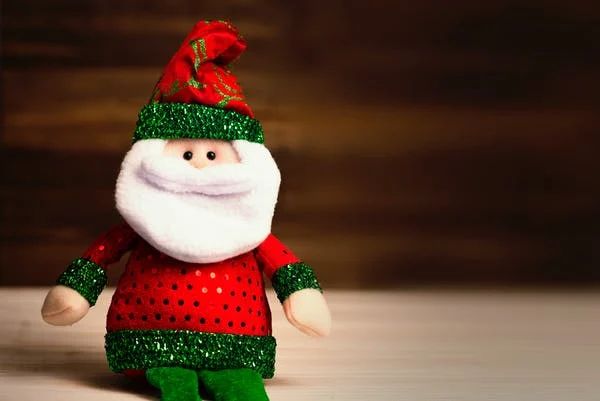Santa Claus has been synonymous with Christmas for centuries, but many people don’t know the story behind how Santa Claus became associated with the holiday. Santa Claus, a jolly old man with a beard and red suit, has been a symbol of Christmas cheer since the 19th century. The story of how Santa Claus came to be intertwined with Christmas is an interesting one, and one that will be explored in this blog post.
The History of Santa Claus
The origins of Santa Claus, the beloved figure associated with Christmas, can be traced back hundreds of years. According to history, Saint Nicholas was a Christian bishop who lived in 4th-century Greece. He was known for his generosity and was especially devoted to helping children. As the legend goes, he would fill the stockings of the poor with gifts and money on the eve of his feast day (December 6th).
In Europe, during the Middle Ages, the story of Saint Nicholas merged with Germanic folklore and Santa Claus as we know him today began to take shape. The Dutch referred to him as Sinterklaas and the English called him Father Christmas. It wasn’t until 1809 that Santa’s North Pole home and flying reindeer were introduced in an illustrated version of the poem A Visit from St. Nicholas. This popular poem is better known today as The Night Before Christmas and it is widely credited for creating the modern Santa Claus legend.
Santa Claus has become an integral part of many Christmas traditions. From his bright red suit to his joyous laugh, he is the embodiment of Christmas cheer. He also serves as a symbol of giving, reminding us all to think of others during this special holiday season.
How Santa Becomes Associated With Christmas?
Christmas and Santa Claus have been inextricably linked for centuries. We know of Santa Claus as a jolly old man with a white beard, a red coat, and a big bag of toys for children around the world. But how did this figure become so closely associated with Christmas?
The story begins with a monk named Saint Nicholas who was born in the 4th century AD in what is now known as Turkey. His acts of charity and kindness earned him the title of patron saint of children. During his lifetime, he was known to bring gifts to the needy, particularly children.
After his death, stories of his generosity spread throughout Europe and he soon became one of the most popular saints in the region. Over time, these stories were combined with folklore from various European countries, such as the Netherlands and Germany, and Santa Claus as we know him today began to take shape.
In the 19th century, Clement Clarke Moore wrote a poem called A Visit from St. Nicholas which introduced Santa’s reindeer and their journey on Christmas Eve. In 1881, Thomas Nast created a series of images depicting Santa which depicted him as a jolly old man with a white beard. This image of Santa was further popularised by Coca-Cola’s Christmas campaigns in the 1930s and 1940s.
Today, Santa Claus is one of the most recognizable symbols of Christmas around the world. He has become synonymous with the spirit of generosity and kindness during the holiday season, embodying all that is good about the winter celebration. It’s no wonder why he’s become an integral part of the holiday tradition.
The Origin of the Santa Suit
One of the most iconic symbols of Christmas is the jolly, red-suited figure known as Santa Claus. But where did this famous suit come from? It’s believed that the red suit we associate with Santa Claus originates from a legend that dates back to the 4th century.
The story goes that a monk named St. Nicholas was a great believer in giving to the poor, and on Christmas night he would put coins in the shoes of those who had nothing. As time passed, he became associated with gift-giving at Christmas and by the 19th century, illustrations of St. Nicholas depicted him wearing a red fur trimmed bishop’s robe.
By the 1930s, a red suit with white fur trim became popularised by the many Coca Cola advertisements featuring Santa Claus. Before that, Santa was typically drawn wearing green or brown clothing. The association between Santa Claus and Coca Cola continued until 1964, when a new image of Santa was created by the Haddon Sundblom Company, who dressed him in a bright red coat with black boots and a traditional belt.
This is likely where we get the classic red and white Santa suit that is so widely recognized today. Santa has become a symbol of giving and generosity during the holiday season. And his classic red suit reminds us of all the joy that Christmas brings.

How Santa Is Depicted in Pop Culture?
The image of Santa Claus is a beloved character around the world during the Christmas season. We’ve all heard stories about Santa’s magical sleigh. His reindeer and his large sack of toys he brings to children on Christmas night. Santa has become an iconic symbol of joy and cheer during the holidays.
Santa has been portrayed in many different ways in pop culture. He is often depicted as a jolly old man with a big white beard and a bright red suit, wearing a hat and black boots. Santa is often seen with his bag of presents over his shoulder. Flying through the night sky in his magical sleigh led by his reindeer. He is also often seen in cartoons, movies, and commercials delivering presents to children.
Santa is known for being generous and kind to children, rewarding them for their good behaviour throughout the year. He is also associated with the values of family and giving. Through various depictions in pop culture, Santa has become an inspirational figure in society. By promoting ideas of generosity, kindness, and charity.
The image of Santa Claus has been passed down from generation to generation. And his popularity continues to grow each year during the Christmas season. Whether it be through books, movies, or TV shows. Santa Claus will always remain a popular figure in pop culture. To bringing Christmas cheer and joy to people around the world.
The Evolution of Santa
Christmas and Santa Claus have been a part of our culture since the 19th century. The tradition of a jolly old man in a red suit. Who brings gifts to children on Christmas Day has evolved over the years. But it all started with a man named Saint Nicholas.
Saint Nicholas was a 4th century Greek Christian bishop from what is now modern-day Turkey. He was well-known for his generous acts of charity and gift giving. Which is why he has become so closely associated with Christmas and the holiday season. It wasn’t until the 19th century that the image of Santa Claus as we know him today came into popular culture.
The first modern depiction of Santa Claus was created in 1881 by cartoonist Thomas Nast. In this portrayal, Nast depicted Santa living at the North Pole, riding a reindeer-pulled sleigh. Subsequently, this image of Santa was widely popularised by Coca-Cola’s holiday advertising campaigns in the 1930s and 1940s. In recent years, Santa has appeared differently, even as computer-generated versions in media.
No matter what form he takes. Santa Claus is sure to remain an important part of Christmas celebrations for generations to come.
In modern world
Christmas and Santa Claus go hand in hand. The jolly old elf is a beloved figure of the holiday season. To bringing joy and cheer to people around the world. Santa Claus has become a symbol of Christmas, representing its spirit of giving and celebrating. He is often seen delivering presents on Christmas Eve, or visiting children in shopping malls during the holiday season. Santa’s story has been told through popular culture, not only from stories and movies but also through songs and artwork. His image is often used to represent the spirit of Christmas. As a result, he is one of the most recognizable symbols associated with the holiday. Santa Claus is more than just a figure. He’s a cultural icon that represents the spirit of Christmas and brings joy and hope to people around the world.

